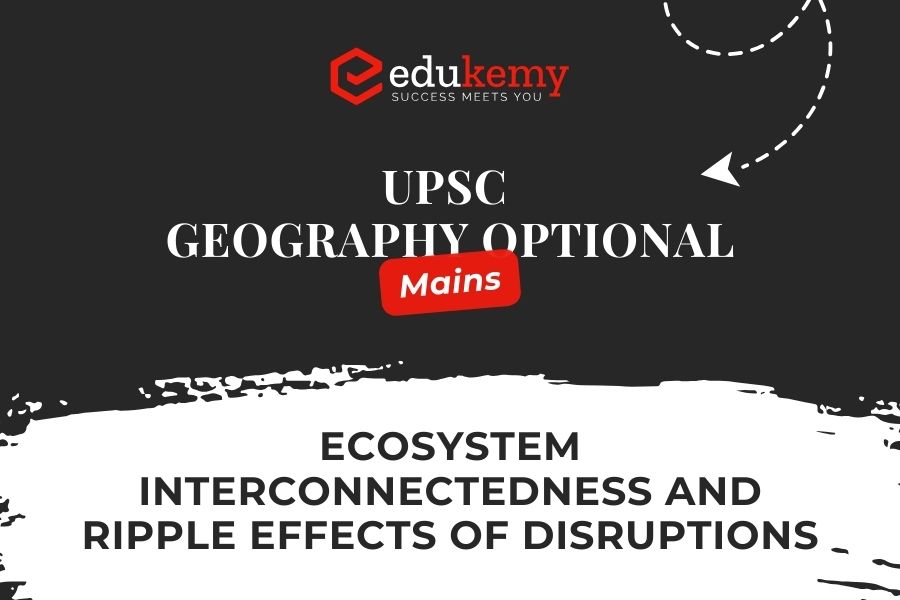
Explore the interconnectedness of ecosystems, where disruptions to one component reverberate across the entire web of life. Every organism, from microscopic bacteria to apex predators, plays a vital role in maintaining the delicate balance of ecosystems. When one species is affected, whether by habitat loss, pollution, or climate change, it can trigger a cascade of effects throughout the ecosystem. For example, the decline of pollinators can disrupt plant reproduction, affecting food sources for other organisms. Similarly, overfishing can destabilize marine food webs, impacting predator-prey dynamics. Understanding these interconnected relationships underscores the importance of holistic conservation efforts to preserve biodiversity and ensure the resilience of ecosystems against environmental threats. Delve into the complexities of ecosystem dynamics, recognizing the far-reaching consequences of disruptions to individual components.
Contents
Answer:
Introduction:
The interconnectedness of ecosystems forms the intricate web of life, where each component relies on others for survival. This delicate balance ensures the functionality and stability of the environment.
Body:
- Biodiversity Loss: Disruption to one species can have cascading effects.
- For instance, the decline in bee populations due to pesticides leads to decreased pollination, affecting crop yields and ultimately impacting food chains.
- Trophic Cascades: Predators regulate prey populations, preventing overgrazing or overpopulation.
- For instance, the reintroduction of wolves in Yellowstone National Park led to changes in elk behavior, which in turn affected vegetation growth and even altered the flow of rivers.
- Climate Change: Alterations in climate patterns disrupt ecosystems worldwide.
- For example, the melting of Arctic sea ice affects the habitat of polar bears, reducing their access to food sources and threatening their survival.
- Ocean Acidification: Increased carbon dioxide levels in the atmosphere lead to higher concentrations in oceans, causing acidification.
- This disrupts marine life, affecting coral reefs, shellfish, and fish populations, with consequences for both ocean ecosystems and human economies reliant on fisheries.
- Deforestation: Clearing forests not only removes habitat for countless species but also disrupts water cycles, soil stability, and carbon sequestration, exacerbating climate change and impacting communities downstream.
- The clearing of forests in the not only affects biodiversity within the forest but also impacts agricultural productivity in surrounding areas and contributes to global climate change through reduced carbon sequestration.
- Invasive Species: Introduction of non-native species can outcompete native ones, leading to the decline or extinction of local species and disrupting entire ecosystems.
- For instance, the introduction of the cane toad in Australia led to declines in native predators due to toxicity.
- Ecosystem Services: Healthy ecosystems provide vital services like clean air, water purification, and pollination.
- The loss of wetlands due to urbanization and agricultural expansion not only reduces these services but also increases the risk of water pollution and flooding, impacting human health, infrastructure, and economies dependent on these services.
- Global Trade and Transport: In an increasingly interconnected world, the spread of pathogens and invasive species through global trade and transport can rapidly disrupt ecosystems across continents.
- Examples include the spread of diseases like Dutch elm disease and sudden oak death.
Conclusion:
Understanding the interconnectedness of ecosystems is crucial for preserving biodiversity and ensuring the resilience of our planet in the face of environmental challenges. Conservation efforts, sustainable practices, and international cooperation are essential to mitigate disruptions and protect the web of life for future generations.
In case you still have your doubts, contact us on 9811333901.
For UPSC Prelims Resources, Click here
For Daily Updates and Study Material:
Join our Telegram Channel – Edukemy for IAS
- 1. Learn through Videos – here
- 2. Be Exam Ready by Practicing Daily MCQs – here
- 3. Daily Newsletter – Get all your Current Affairs Covered – here
- 4. Mains Answer Writing Practice – here

